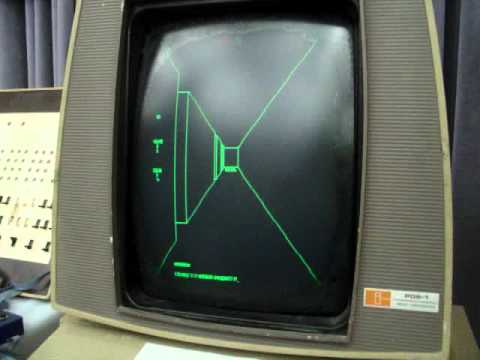Plato's Labyrinth Mac OS
Plato's Labyrinth Mac OS
- (7) Textile continued to be a part of Systems 8 and 9 and then “Classic”, bundled with OS X until the release of OS X 10.5 “Leopard” in 2007. After that, Textile made only sporadic OS appearances bundled with a few applications.
- It has been several decades since an underground labyrinth was discovered in a corner of these ruins. According to a book found in a nearby temple, within this labyrinth sleeps the fortune that was the source of the ancient city’s prosperity. No one has yet seen it in this labyrinth, which is now home to monsters.
This page was last edited on 20 April 2020, at 01:01. Content is available under Creative Commons Attribution-ShareAlike 4.0 International License. Unless otherwise noted. This open-source Wire chat app is offering full end-end encryption for the communication. This Wire chat app built with nice additional features like timed messages (the message will automatically disappear from conversations as the timer you set for them runs out) audio messaging capability with complete voice and video call support.
Note: If your browser is having trouble displaying the uppercasecursive (‘script’) characters that we have started to usein some technical entries, please follow the instructions for installingComputer Modern Symbol font (cmsy10.ttf) from the CTAN TeX Archive site:
BaKoMa TTF fonts
Once you have reached the above page, all you need to do is search for‘cmsy10.ttf’ and download/install that font.
Microsoft Windows 7 – 10; Mac OS X 10.6 – 10.15
At this time, there are no known issues when displaying our webpagesin Windows 7 – 10, or on any of the following Mac systems: MacOS X 10.6 (Snow Leopard), Mac OS X 10.7 (Lion), Mac OS X 10.8(Mountain Lion), Mac OS X 10.9 (Mavericks), Mac OS X 10.10 (Yosemite),Mac OS X 10.11 (El Capitan), or macOS 10.12 (Sierra), macOS 10.13 (High Sierra),macOS 10.14 (Mojave), or macOS 10.15 (Catalina).

Microsoft Windows/Vista and Mac OS X/Leopard (10.5)
Windows/Vista. Though we have had limitedopportunities to test our pages on Vista machines, the best resultsare obtained when using Firefox as the browser using its default font. We've had reports that Internet Explorer may lack certain special Unicode characters that we use. If you can't install Firefox, then try: Start → Settings → Control Panel; switch to the Classic View of the Control Panel; select Regional and Language → Languages and then check both “Install files for complex script” and “Install files for East Asian languages”. Then Restart your computer so the new fonts will get loaded.
Mac OS X/Leopard (10.5). The versions of Safari,Firefox, Camino, Mozilla, and OmniWeb that run under Mac OS X 10.5have all been tested successfully. However, for the best results, youshould set the font to Times or Lucida Grande, since these fonts seemsto have the widest support for Unicode characters in Mac OS X. We'vealso tested Opera with pretty good success. See also Alan Wood'sUnicode Resources: Unicode fonts for Macintosh OS X computers.
Linux, FreeBSD, Solaris, and other Unix OSes
Firefox, Chrome, and Opera all provide reasonably good support forthe special characters used in SEP entries, assuming you use thedefault font. However, we haven't test our pages with these systemsas widely as we have the Windows and Mac platforms. So we cannotsupply more specific information about what works best, i.e., whatbrowser/font combination supports the widest range of Unicodecharacters.
Microsoft Windows XP, NT, 2000, ME, and 98
Firefoxgives the best results. If you are using IE 7 under Windows XP, or IE6 under Windows XP, 2000, ME or 98, try setting your font to LucidaSans Unicode, Arial, Times, Times New Roman or Courier New fonts, allof which are supposed to support the Unicode named character entitieswe use in our documents. It is important to remember that not all ofthese fonts will support all the Unicode characters, so you may needto try different fonts for entries which have obscure characters.
Some things to do if special characters aren't displayed:

- Some users need only use the Windows Update mechanism built intoInternet Explorer to install support for the East Asian languages onyour Windows machine. For some reason, this makes the Unicode fontsavailable to IE!
- In IE select the Tools → Windows Update menu item
- In the window that comes up, choose to scan your system
- If the scan completes and shows new updates to install,select Windows updates in the left frame of the window; if it says nonew updates are available, then try Option 2 below
- Under the Language Support category in the lower right frame,click the 'Add' button for each of the Asian languages (Chinese,Japanese, Korean) [we are not sure whether all of these are required,but they do seem to be jointly sufficient]
- Click review and install in the upper right frame of thebrowser window
- Wait for installation to complete
- Restart web browser
- If, after scanning your system, IE reports that there are no newupdates available, you may instead have to use the Control Panel toinstall support for the East Asian languages on your Windows machine.Again, for some reason, this makes the Unicode fonts available to IE!Just follow the first 4 instructions on the following web page:
Installing East Asian Language Support Under Windows XP
Installing East Asian Language Support Under Windows Professional 2000 - Alternatively, try following the instructions at Alan Wood's Unicode Resources page:Unicode fonts for Windows computers
- Alternatively, install and use any of the other web browsers mentioned below:
Firefox
Generally these browsers work without any special configuration underWindows XP and Windows 2000, but for these browsers to work correctlyunder ME/98, you may have to (a) follow Step 2 above (exceptinstalling the Asian language support from your install CD) and (b)set Preferences in these browsers to use a Unicode-enabled font(Lucida Sans Unicode, Arial, Times, Times New Roman).
Safari
Opera
We should also note the following for Windows XP users. Our pages,and all other web pages, will look better if you set the following:Control Panel → Display → Appearance → Effects →Use the following method to smooth edges of screen fonts →ClearType.
Plato's Labyrinth Mac Os X
Apple Mac OS X/Tiger (Panther, etc.)
Mac OS X Tiger (Panther, etc.). Safari and Firefox work well. For Safari, set the font to either Time Romanor Lucida Grande. For Firefox, use the default font.
A Note About the Special Characters in our Entries
We have tried to format our entries in XHTML so that they displayproperly in a wide range of web browsers. We have developed a webpage of special characters which display correctly in a varietyof current browsers. See
Widely Supported HTML 4 and Unicode Characters
But many of our entries use special symbols, such as logical,mathematical, and other symbols, which are not widely supported. Hereis a list of such symbols:
Special Symbols Not Widely Supported
Plato's Labyrinth Mac Os X
In the past, we used many more of the 'low-resolution' screen shotsof these characters and displayed the resulting graphics in the entryas small images, as we have done on the page cited immediately above.But, recently, after being convinced that there was wide support forUnicode characters among web browsers and operating systems, westarting replacing the low-resolution graphics with widely supportedfont-based Unicode characters. We are slowly but surely making all ofour older entries compatible with the newer XHTML standard in theprocess. Indeed, we have now configured our publishing system so thatour entries must parse as valid XHTML (i.e., be in compliance with theinternational standards set by the authoritative W3C organization) before they are published on the web. (We determine validity bysending our entries, pre-publication, to <http://validator.w3.org/> and fixing any errors reported when this engine tries to determinewhether our documents are valid.)
Plato's Labyrinth Mac Os Catalina
Invariably, our best intentions are sometimes defeated by thetechnologies involved. If your browser is not properly displaying thenamed character entities in an entry (e.g., logical symbols,mathematical symbols, etc.), then we hope the above suggestions proveuseful.
Plato's Labyrinth Mac OS
